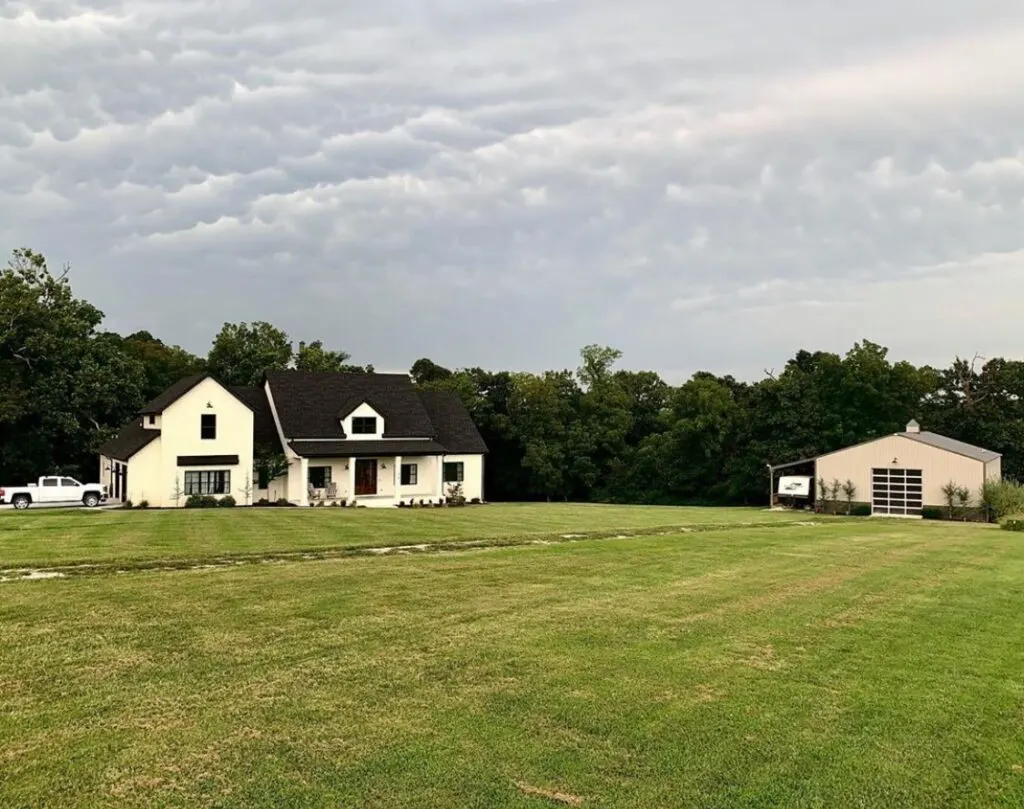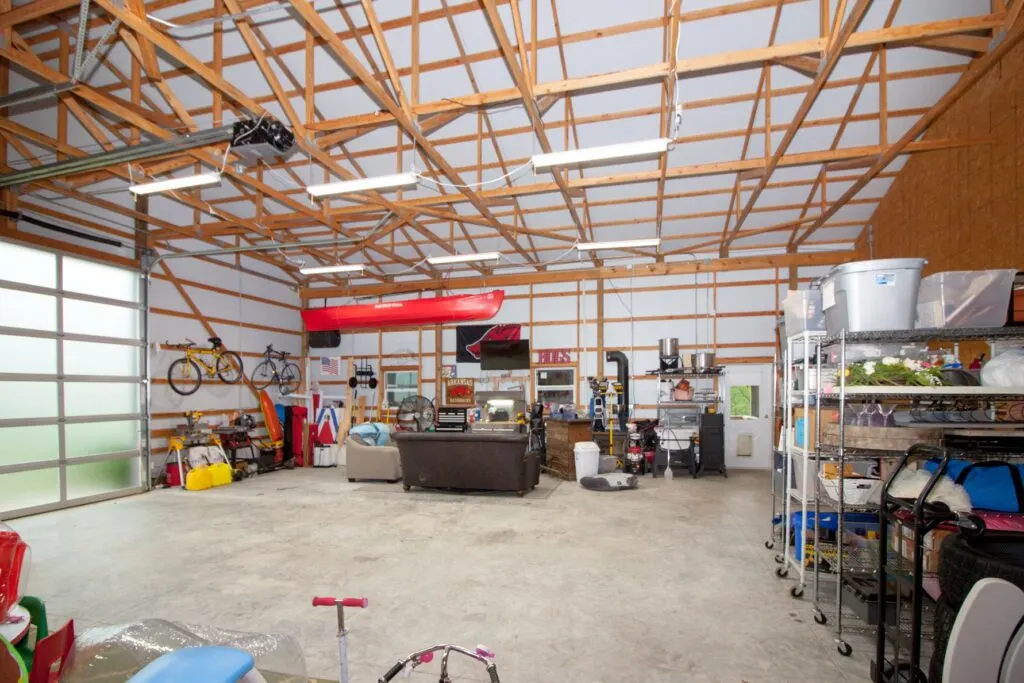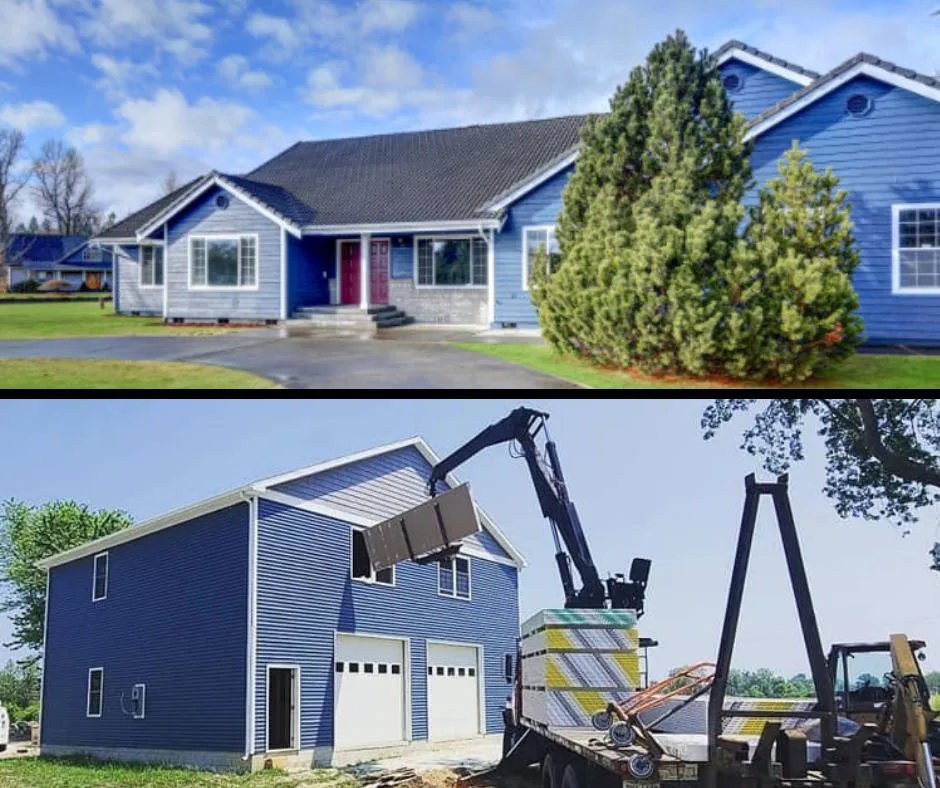Shouses are quickly becoming a top choice for those who want to build affordable, functional homes in rural areas. Compared to standard houses, shouses tend to offer more space, increased stability, and more design options.
Yet, a shouse may not be ideal for everyone. It is a unique type of home with useful features that appeals to a niche segment of the population. Use the following comparison to explore the similarities and differences between a shouse vs house.

Page Contents
What Is a Shouse?
A shouse is a type of shophouse. The original shophouses acted as both residences and commercial properties and have appeared throughout history.
Variations of shophouses were found in Europe during the Middle Ages and in Southeast Asia in the 1800s. Shophouses are still a common sight in urban parts of China and Sri Lanka. Many shophouses feature a shop entrance with living quarters toward the back of the property or on an upper floor.
Modern shouses, such as the ones you see throughout North America, are houses with large workshops or garages. However, there are a few key differences between a shouse vs house.
Shouses are typically built using a type of construction called post-frame construction or pole framing.
Post-frame construction originated in the 1930s, as builders started using utility poles to construct barns and other buildings. Pole barns and pole buildings are still found throughout rural areas and industrial zones.
The frame of the building is supported by large posts set deep in the ground and anchored to a slab foundation. While the original pole buildings are built with wood frames, many modern buildings, including shouses, are built with metal frames.
The posts and horizontal beams support the roof, which eliminates the need for load-bearing walls in the interior of the building. The interior is separated into a residence and a workshop. Some designs may blend the two spaces, allowing the living area to flow seamlessly into the work area.
The exterior of the typical shouse has a slightly industrial look, resembling the types of metal agricultural buildings found throughout rural areas. However, the interior can have all the amenities and luxury furnishings found in a traditional house.
Pros and Cons of Building a Shouse
The unique design and features of shouses provide several major advantages over other types of properties. Some of the benefits include:
- Convenient access to your hobby or trade
- Extra storage space
- Lower costs for construction
- More natural light
- Open floor plans and taller ceilings

When you build a shouse, your workshop is connected to your living quarters. You gain space for a hobby or trade with convenient access and no commute. You could also use the extra space as storage.
One of the main benefits of building a shouse vs house is the cost. Building a standard house can cost about $100 to $200 per square foot while shouses tend to cost $40 to $120 per square foot.
As shouses are built with post framing, you can install bigger windows to let more natural light inside. The frame also supports open floor plans and taller ceilings.
The main drawbacks between building a shouse vs house include difficulty with financing and a limited selection of places to build your shouse. You cannot typically build a shouse in a city or a suburb. Some lenders may also refuse to approve a construction loan for a shouse. However, if you plan on building in a rural area and take the time to find the right lender, you should not need to worry about these issues.
Pros and Cons of Building a Standard House
Standard houses are built with wood stud framing. Wood studs are spaced about 18 to 24 inches apart. The wood frame is easy to construct and cheaper compared to a metal frame, which helps add to the benefits of building a standard house:
- A wider selection of contractors
- A wider selection of lenders
- More places to build your home
As shouses are a niche area of real estate, many contractors do not have experience building these unique properties. However, you should have no problem finding contractors and building companies with extensive experience constructing standard residences.
Finding lenders for your construction loan should also be easier. Yet, applying for a construction loan for any type of property still requires a large down payment and detailed construction plans. You may need to provide 20% to 30% as a down payment.
You also gain a wider selection of places to consider building your new home. While shouses are prohibited in some urban and suburban areas, you can build a standard home almost anywhere.
Building a standard house also comes with some disadvantages. Unlike a post-frame, stud frames typically use interior walls to help support the roof or upper floor. The load-bearing walls limit your design options for the floor plan compared to building a shouse.
Deciding to build a standard house will also increase the cost of construction. As mentioned, you may spend twice as much to construct a traditional home compared to building a shouse.

Pros and Cons of Buying a Standard House
Instead of building your new home, you can choose from a wide range of existing residential properties. Some of the advantages of buying a home instead of building a house or shouse include:
- You have a wide selection of properties
- Obtaining financing is easier
- You can move in sooner
While shouses are gaining attention, you are unlikely to find many existing shouses for sale. The phenomenon is still relatively new and many of the shouses that you see are occupied by their original owners.
Standard houses are available everywhere. You can find single-family homes in rural areas, urban areas, and the suburbs. The availability of homes that meet your specific needs may vary depending on the current state of the real estate market. However, you still have more options compared to shopping for shouses.
Obtaining financing is also typically a little easier when you buy a home instead of building one. The construction process includes a lot of unknown variables, which forces lenders to be less lenient with loan applications.
Approving a construction loan is riskier compared to approving a mortgage for a standard home. You may experience delays, accidents, or costly mistakes that impact the value of the property. Buying an existing home does not include the same risks, reducing some of the stress of applying for a loan.
Buying a house is also quicker compared to building one. The average timeframe for constructing a new home is about seven to nine months from the time that you break ground. You can typically expect to close on a home within 30 to 45 days after the owner accepts your offer.
Summary: Shouse vs House
Building a shouse provides several distinct advantages over building a traditional house. Shouses are typically more resilient and less likely to suffer damage from severe weather. However, shouses are not permitted in most urban areas.
If you choose to build a shouse, you may need to find land in rural areas. Depending on where you work, building a shouse may also increase your commute and place you further from the amenities that you depend on.
The bottom line is that a shouse is a good choice for those looking to build a new property outside of the city, as you can save money on construction and gain more space for a hobby or trade.
Gail currently spends her free time geeking out about what’s new and trending in the world of barndominiums.
She is the former executive editor of BarndominiumLife.com and loves working with the team and members of the barndominium community. She now contributes to the blog on occasion, but only when she feels like it!
